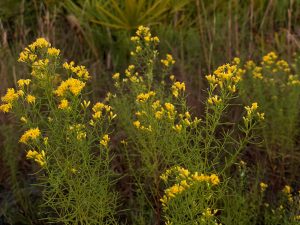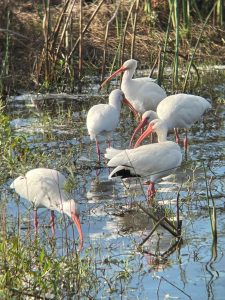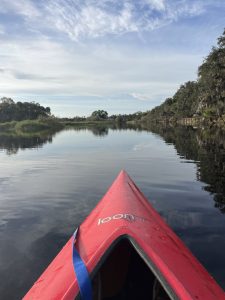There are many places worth understanding and protecting here in Sarasota County. From acres of imperiled scrub that provides habitat for threatened species and uniquely adapted plant life, to vital mangrove forests that protect our coastlines and serve as a safe haven for the ocean’s next generation. East of Interstate 75 lies over 37,000 acres of state park that have truly captured my heart. Come along with me as I explore this special place in the blog series, “Wild and Scenic”.
A Florida Gem

Myakka River State Park, formally established and opened to visitors in 1941, is one of Sarasota County’s unique and precious treasures. In just a day’s worth of adventure, one can enjoy the pleasure of having their car stopped by a flock of peculiar yet regal wild turkeys strutting across the road, watch in awe as sizeable alligators pull their heavy bodies from the water to rest on the sunny banks of the river, and when the season is right, delight in the colorful and picturesque landscapes created by blooming wildflowers.
From beautiful vantage points, short walks featuring opportunities to view wildlife, and longer day hikes and backcountry camping to paddling the Myakka River, there are an abundance of ways to enjoy Florida’s true beauty.
Ecological Wonders
Fun opportunities to learn and recreate are not all this slice of “Real Florida” has to offer, however. Myakka River State Park critically protects over 10 unique types of ecosystems, and by extension, the many species of wildlife, insects, plants, and fungi that need them to survive.
Meandering through the state park are 12 miles of Florida’s only state designated Wild and Scenic River, for which the park is named. To some, the dark color of the Myakka River may obscure its importance, but this tannic system is home to manatees, alligators, several species of native fish, slithering water snakes, and river otters. Its floodplain feeds flocks of hungry birds. Heavily influenced by seasonal water levels, the Myakka River and its surrounding floodplain can change greatly throughout the year.

Protecting A Slice of Real Florida

This ability to support such a rich variety of life, or biodiversity, is one of the reasons why in the 1970’s, local stakeholders and residents recognized that the Myakka River, and the ecosystem services and natural resources provided by it, needed permanent protection. Locals organized basin workshops and requested a formal study of the river by the National Park Service. Eventually, a bill passed in 1985, designating the 34 miles of the Myakka River running through Sarasota County as Florida’s first state Wild and Scenic River, ensuring protection for generations to come.
Along with this designation came the Myakka River Management Coordinating Council, a collection of local, county, and state officials, nonprofits, and individuals, who work with the Florida Department of Environmental Protection to maintain the health, ecological integrity, and function of the Myakka River (Myakka Wild and Scenic River Management Plan, 1990, revised 2011). Without the protections, attention, and intentional management that resulted from the Wild and Scenic designation, we could have lost something very special.
An Adventure Begins

The Myakka River’s headwaters originate in Manatee County. As the river moves along, a significant portion takes form and flows through Sarasota County, and its endpoint meets the Gulf of Mexico in Charlotte County’s Charlotte Harbor. Managing the river’s 66-miles of length and tracking its health is a complex task! In late January, I had the opportunity to join a Florida Department of Environmental Protection biologist to survey 14 miles of the river by kayak, in hopes of better understanding the state of the Myakka River and the wildlife it supports, as well as some of the conservation issues this spectacular ecosystem faces.
Follow Along with Me
In the blog series, “Wild and Scenic”, experience a day in the life of someone who helps monitor and protect the Myakka River for a living. Follow along to get an inside perspective on what’s going on beneath the surface and along the edges of this important ecosystem. Find all of the blogs in this series here:
Wild and Scenic: A Day in the Life of a Biologist on the Myakka River Part 2
Wild and Scenic: A Day in the Life of a Biologist on the Myakka River Part 3
Wild and Scenic: A Day in the Life of a Biologist on the Myakka River Part 4
Learn More
Learn more about the Myakka River and its history, conservation, and management with these resources:
Florida State Parks: Myakka River State Park
Friends of Myakka River: The Wild and Scenic Myakka River
Myakka River Management Coordinating Council
Conservation Foundation of the Gulf Coast: The Wild and Scenic Myakka River
 2
2
